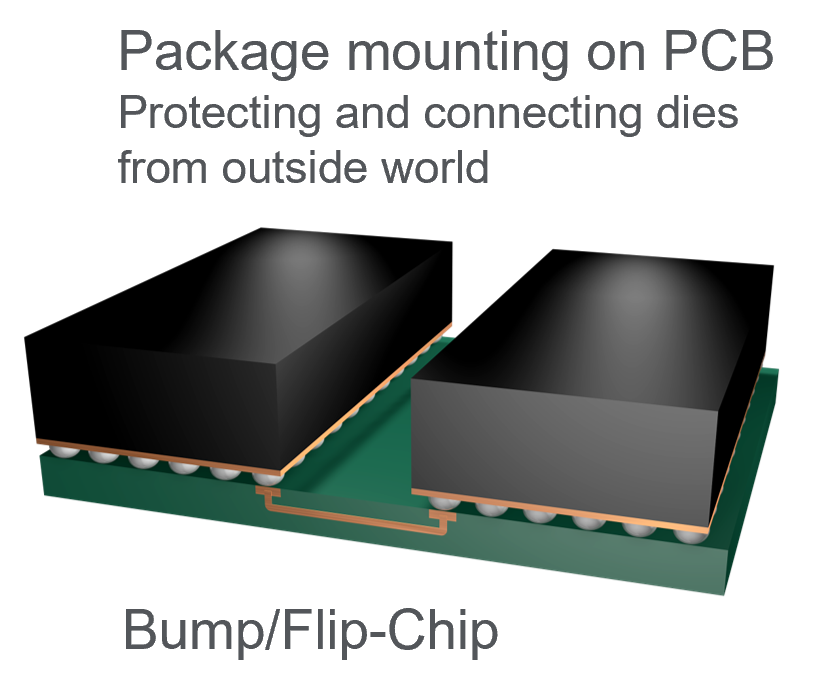半导体 (Semiconductor)
解决方案与软件
凸点
除了引线键合外,凸点连接是芯片到芯片、芯片到衬底以及衬底到 PCB 连接的最成熟技术。凸点工艺需要在焊盘上形成凸起的金属区域,以便同时将“凸点”连接到衬底或封装上。凸点连接有不同的级别,从粗间距(500微米及以上)到极细间距(<50微米),每个级别有不同的分辨率。要使器件之间的距离更近,以提高数据传输速率并降低功耗,就需要在不牺牲良率的前提下使凸点直径和间距越来越小。
设计人员希望以更低的功耗获得更高的系统级性能,这促使他们考虑如何以最佳方式集成芯片和系统。设计人员发现,很难在单个晶粒上放置高性能计算、机器学习和推理所需的晶体管。作为替代方法,设计人员正在使用多晶粒先进封装,使高性能逻辑芯片和存储器更加接近,从而降低延迟和功耗。这种被称为异构集成的方法需要极高密度的短连接,比以往的封装技术高出几个数量级。


